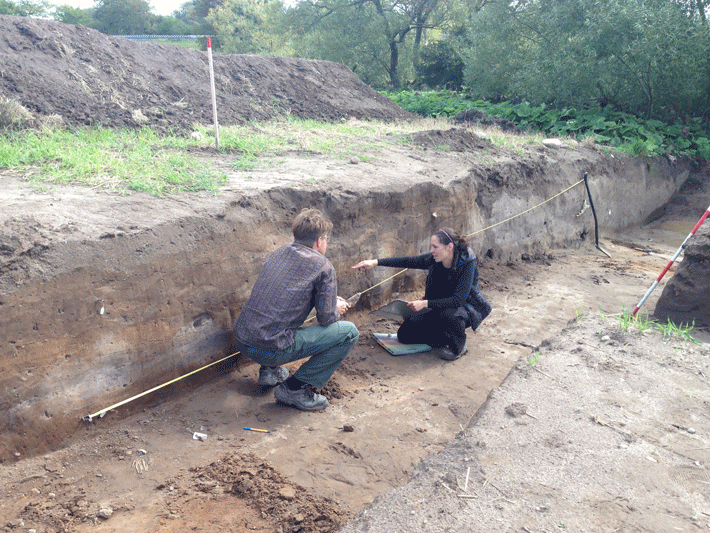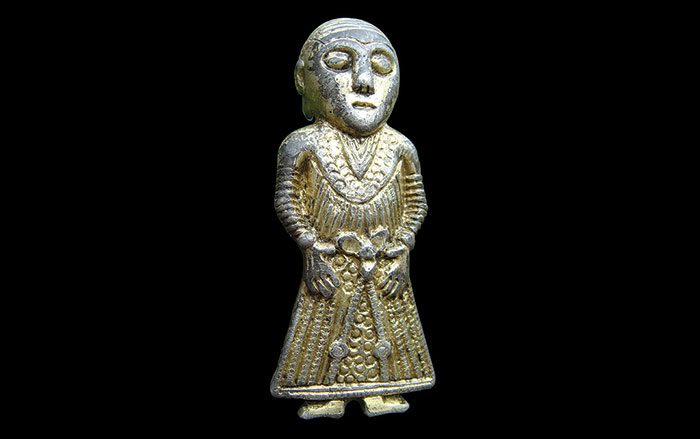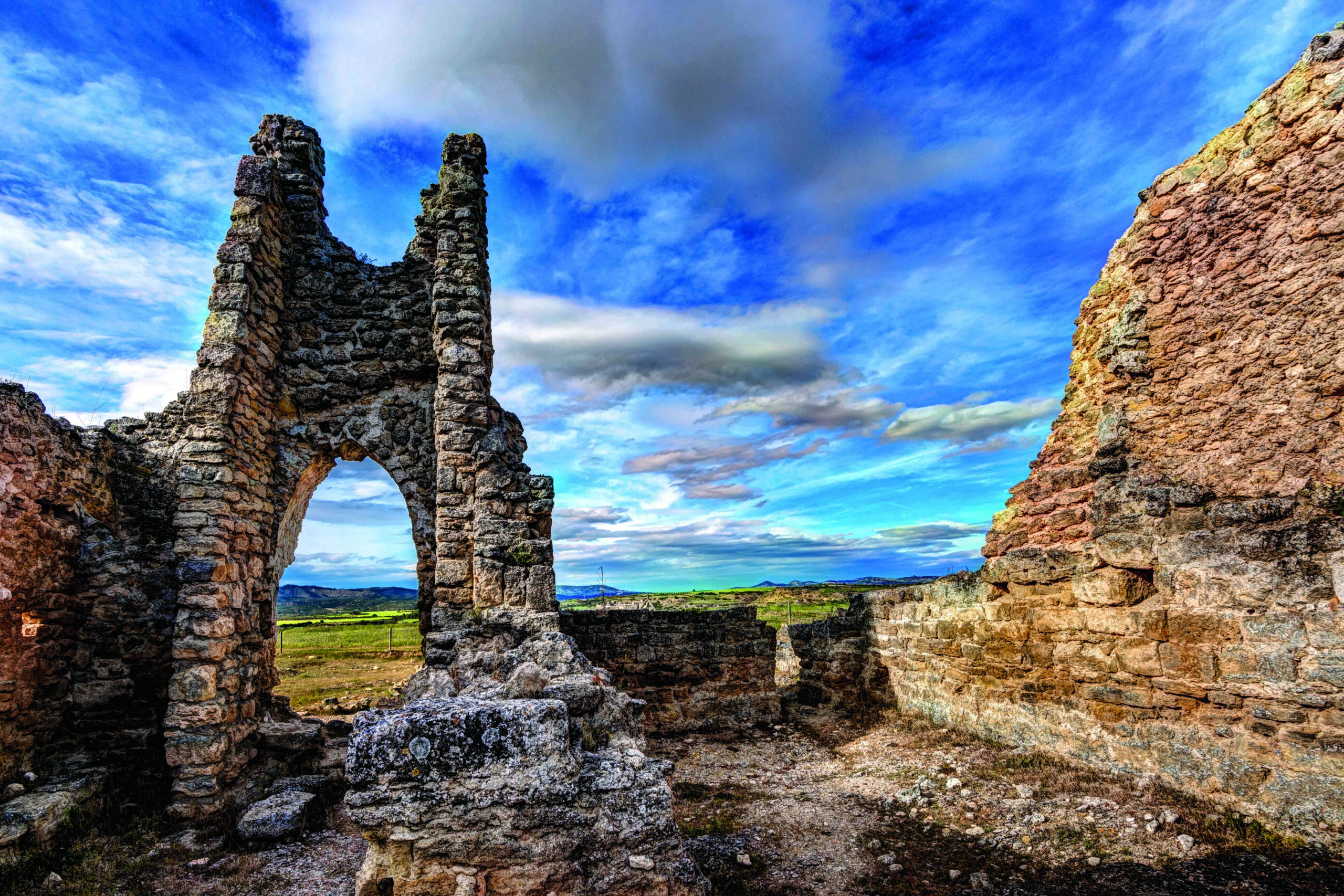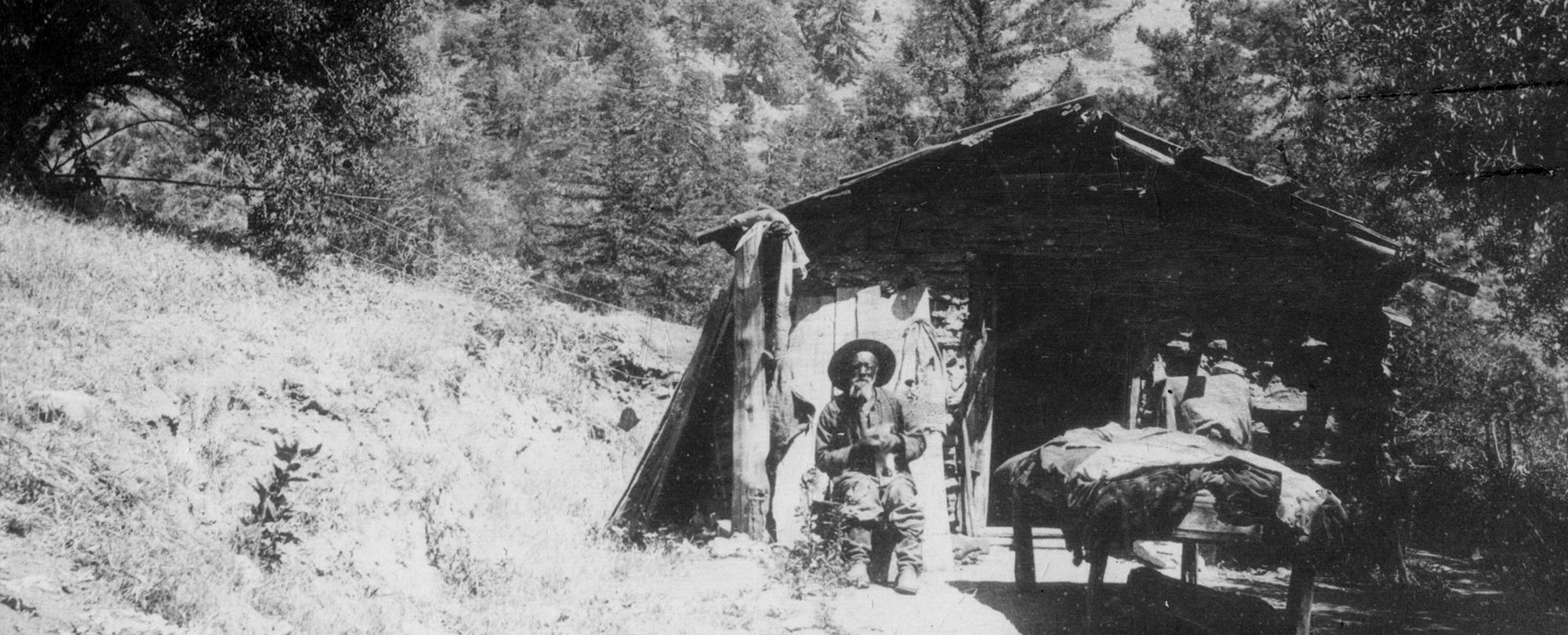AARHUS, DENMARK—According to a statement released by Aarhus University, medieval craftspeople living at the port of Ribe developed their metalworking practices between the eighth and ninth centuries. A team of researchers led by Vana Orfanou examined more than 1,100 crucibles and molds, 24 keys and brooches, and 24 ingots and metal fragments unearthed at two sites in the town of Ribe. Orfanou said that in the eighth century, craftspeople used two or more metals when mixing alloys, but the combinations were not consistent. Leaded brass was commonly used, she added. By the ninth century, high-zinc brass became more common, although leaded alloys were still used for objects such as keys, perhaps because leaded alloys are easier to cast into molds. The ingots did not carry distinctive features, but may have been traded with other Viking settlements. The researchers also detected changes in metalworking tools over time. By the ninth century, a more heat-resistant clay was used for making crucibles. These improvements may have been shared with other Viking settlements, Orfanou explained. To read about a new study of a metal Viking helmet, go to "An Enduring Design."
Improvements in Viking Metalwork Investigated
News April 22, 2021
SHARE:
Recommended Articles
Digs & Discoveries September/October 2021
Viking Fantasy Island

(Courtesy Flinders University)
Digs & Discoveries May/June 2020
Viking Knights, Polish Days

(Photo by Z. Ratajczyk)

(Courtesy The Danish Castle Center, Linen)
Artifacts September/October 2014
Silver Viking Figurine

(Courtesy Claus Feveile/Østfyns Museum)
-
Features March/April 2021
The Visigoths' Imperial Ambitions
How an unlikely Visigothic city rose in Spain amid the chaotic aftermath of Rome’s final collapse
 Yil Dori
Yil Dori -
Letter from Chihuahua March/April 2021
Cliff Dwellers of the Sierra Madre
A recurring design motif found in northern Mexico’s ancient mountain villages reflects complex cultural ties between distant peoples
 (Photo by Stephen H. Lekson)
(Photo by Stephen H. Lekson) -
Artifacts March/April 2021
Subeixi Game Balls
 (Courtesy Patrick Wertmann)
(Courtesy Patrick Wertmann) -
Digs & Discoveries March/April 2021
An Enduring Design
 Courtesy Durham University
Courtesy Durham University


